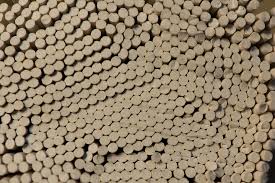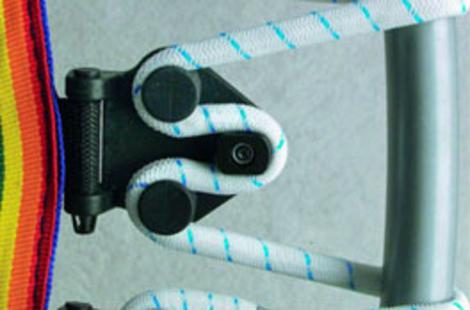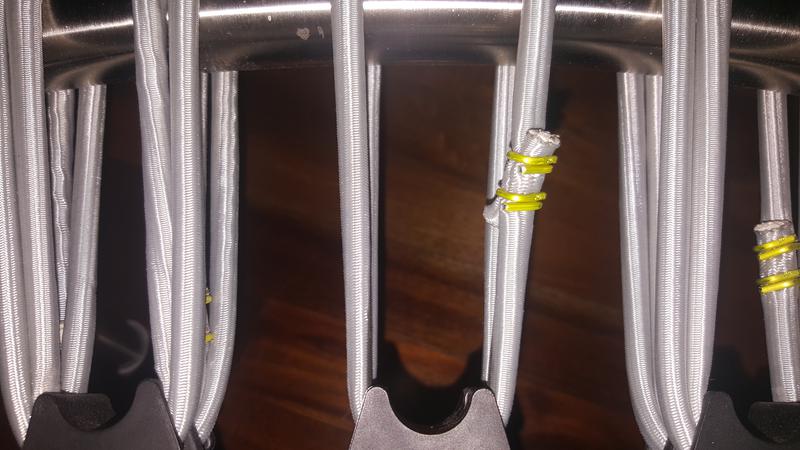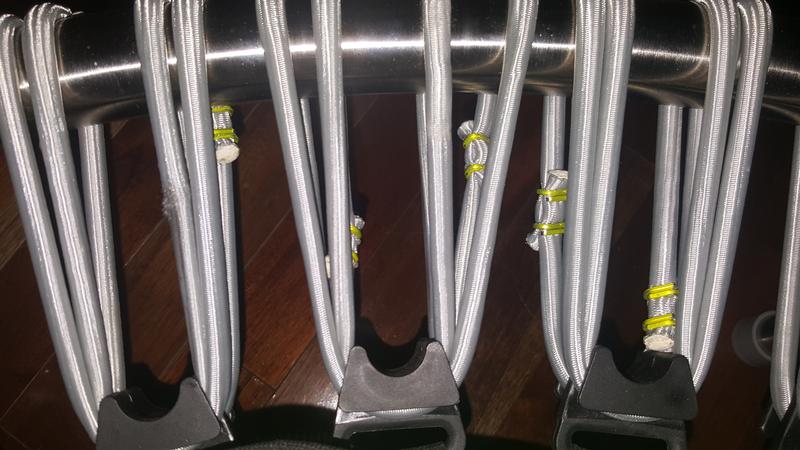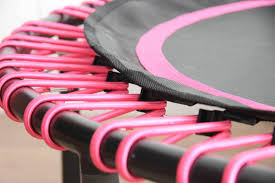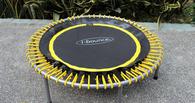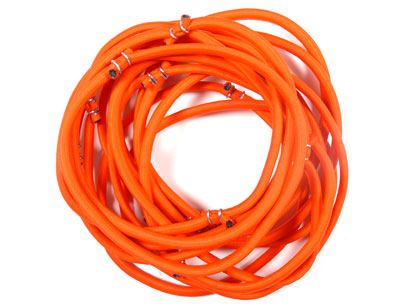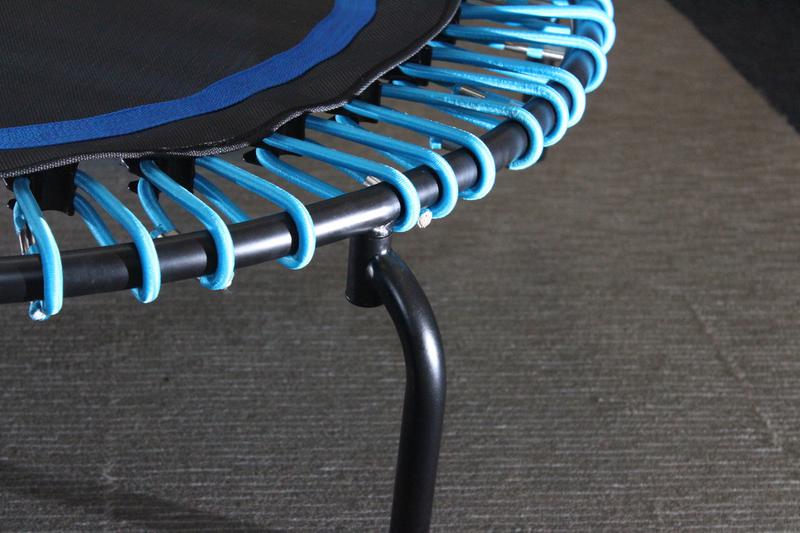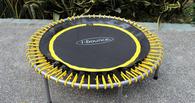Tensile strength is the first thing that is noticed when comparing a bungee rebounder that is 6 months old to a brand new one. Most people don't realize their bungee rebounder has lost most of its original tensile strength since the loss is so gradual.
Many companies are making thicker diameter bungees to make them last longer and stronger. This is not cool. The tensile strength of the ribbons are low and by just "adding more" bungee ribbons just makes the bounce more flat. The stretchiness is what makes a really quality cord expensive to make, not just adding more to make them stronger. A 1/8 inch bungee cord has a tensile strength of about 100 pounds while a 1/4 inch can have a tensile strength over 250 pounds per cord. When 30+ bungee cords are added to a rebounder, this makes each band yield less. So, when companies say their bungee rebounders last several million bounces, which is really not that long if jumping on the rebounder every day, the bounces that the cord gives after 2 million bounces can feel nothing like it did when the cords were new. So, just promoting long usage for millions of bounces more than a latex cord doesn't impress me. The quality of the bounce is way more important to me than how long they last.
TENSILE STRENGTH WARNING: Note: Bungee cords, especially the natural latex type, have an expiration date. Many times you will see sales on bungee cords. If bungee cords sit out too long they will still work with on rebounders but lose their tensile strength, especially if exposed to heat and humidity. Latex bungee rebounders absorb water unlike the synthetic cords. I had a brand new latex bungee rebounder I left in a garage for a year and when I picked it up I though it was used. The braiding had faded. The bounce felt like a 2 year old cords that need to be changed. The stretch factor when the cords are new can diminish about 30% just from the elements. A stretch factor of 100% when new can go down to 40 to 50% when the cords are used up. Unfortunately, most people continue jumping on their rebounders when the cords lose their tension needed for lymphatic bouncing.
When buying a rebounder, I always make sure the cords are in an air tight packet. This preserves the shelf life so even if the cords are 2 years old from a dealer selling them, they can still work like new. With most high volume companies, they might not seal them in air tight seals because they ship them out as soon as the rebounder is made. Just make sure.
The more bends a rebounder has the higher the decrease in strength of the cords as much as 10% to 15% on thinner cords. I try to stay away from sharp bends in the cord for maximum life expectancy of the cord. The standard design of just looping the cord around the frame once lasts the longest but you can't adjust the tension for multiple users.
With this design, it is a new design in the industry. I also like it that they don't use heavy artificial dyes to color their bands like some companies. Some companies have their entire braiding died bright pink or orange. There are only a few brands that have a more naturally died braiding.
Tensile strength is a hard thing to pick out when deciding on someone's first rebounder because people don't have previous experience. I have experience recommending rebounders for nearly every need. Take my bungee rebounder quiz and I will help you pick out just the right rebounder based on your answers.
The picture on the left is the way to put the metal fasteners underneath the cords. The picture on the right has the metal fastener on the top. Without a cover, I I always make sure the fastener is never on top.
Bungee-Rebounders-Reviewed.com
WE ARE OPEN NOW
Schedule a consultation with a rebounding expert here
WE ARE OPEN NOW
Schedule a consultation with a rebounding expert here
Bungee-Rebounders-Reviewed.com
WE ARE OPEN NOW
Schedule a consultation with a rebounding expert here
WE ARE OPEN NOW
Schedule a consultation with a rebounding expert here
